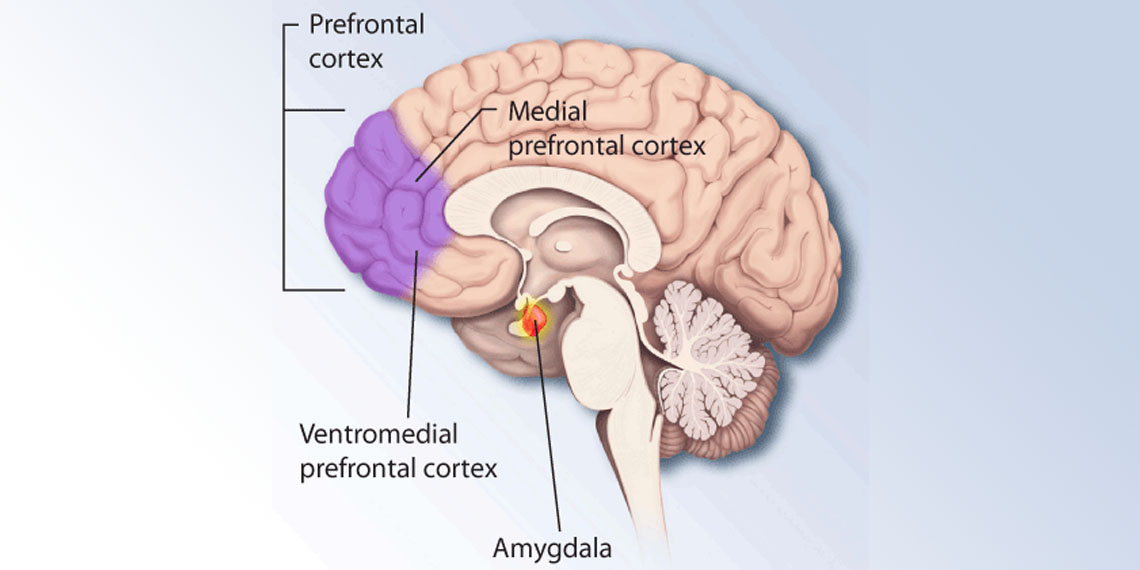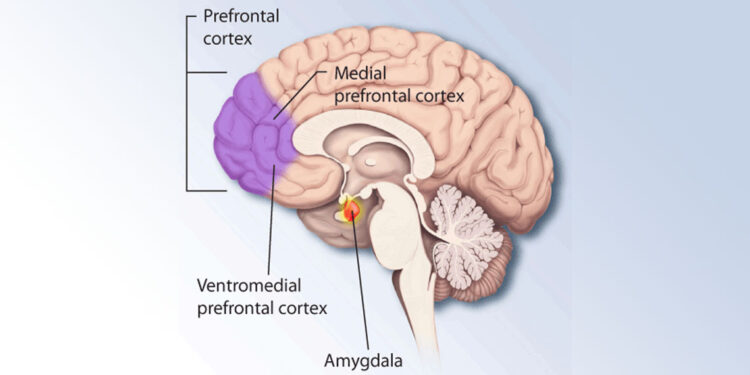
How do we decide when to stick to a goal or when to abandon it for a potentially better option? Recent research published in Nature Human Behaviour has shed light on this dilemma. The study reveals that a brain region known as the ventromedial prefrontal cortex (vmPFC) plays a pivotal role in our tendency to remain committed to our goals.
One key motivation for the study was to bridge the gap between behavioral economics, which provides numerous examples of overcommitment, and neuroscience, which can offer insights into the brain regions and processes involved. Previous research has shown that people often stick with their chosen goals due to emotional and cognitive biases, but the specific brain mechanisms driving this behavior were not well understood. The researchers hypothesized that the ventromedial prefrontal cortex (vmPFC) might play a central role in mediating goal commitment by influencing attention and decision-making processes.
“Economists and psychologists are often interested in describing the ways that humans are ‘irrational.’ An example of this is the ‘sunk cost bias,’ which happens when people are too unwilling to give up on a goal even when it’s failing. We were interested in investigating how these tendencies relate to processes in the brain that could actually help us function in the real world,” explained study author Eleanor Holton, a PhD student at the University of Oxford.
To explore this, the researchers utilized a two-pronged approach: functional MRI (fMRI) and studies involving patients with brain lesions. They recruited 30 participants for the fMRI study and 26 patients for the lesion study.
In the fMRI study, participants engaged in a task designed to mimic real-life decision-making scenarios. They were asked to fill virtual nets with seafood, with each net representing a goal. Participants could choose from three types of seafood (crab, octopus, and fish), each associated with different quantities displayed as bars on the screen. The challenge was to decide whether to continue adding to the current net or switch to a different one, knowing that switching would mean losing all accumulated progress in the current net.
The task was conducted in multiple phases. Initially, participants were trained outside the scanner, followed by a main session inside the fMRI scanner where they performed 300 decision trials. Afterward, they completed 100 additional trials outside the scanner with an added spatial attention task. This spatial task required participants to remember the locations of the seafood items, further examining their attention allocation.
The experimental setup ensured that the values of the seafood offers varied gradually, with occasional large shifts to simulate real-world fluctuations in goal attractiveness. This setup allowed the researchers to model different decision strategies and compare participants’ behavior against an optimal decision-making model.
Analysis of the fMRI data revealed that the vmPFC played a crucial role in tracking goal progress and guiding commitment. Activity in the vmPFC was observed both during decision-making and between decisions, suggesting that it helps maintain focus on the current goal. This was further supported by the spatial attention task results, where participants showed better memory for locations associated with their current goal compared to alternative goals.
Interestingly, the study found that participants tended to overcommit to their goals. Even when an optimal model suggested switching, participants persisted more than necessary. This bias towards persistence was linked to increased goal-oriented attention, indicating that as people progress towards a goal, their focus intensifies on completing it, making them less sensitive to attractive alternatives.
To test the causality of the vmPFC’s role in goal commitment, the researchers turned to the lesion study. Patients with damage to the vmPFC showed significantly lower persistence biases compared to other patients and healthy controls. These patients were less likely to stick to a failing goal, suggesting that the vmPFC is crucial for the observed persistence bias in healthy individuals.
“We find that particular areas of the brain are necessary for people to show sunk cost biases, which is the tendency to keep persisting with a goal even when it would be better to abandon it,” Holton told PsyPost. “Patients with damage to this brain area are more flexible about switching to better goals, but were also less focussed on the goals they selected. Although patients with brain damage did better than healthy people in this particular study, in the real world, sunk cost biases are likely to be helpful in keeping us focused on the goals we set.”
Despite these valuable insights, the study had its limitations. The sample size, particularly in the lesion study, was relatively small, which might limit the generalizability of the findings. Additionally, while the tasks were designed to simulate real-life decision-making, they were still controlled laboratory tasks.
The study opens several avenues for future research. One direction could involve exploring how individual differences in vmPFC activity influence decision-making in various contexts, such as financial investments or personal relationships. Additionally, investigating how other brain regions interact with the vmPFC during goal pursuit could provide a more comprehensive understanding of the neural basis of decision-making.
“While our work gives us some good evidence of how the brain might be able to strike the balance between persisting and abandoning goals, it will be equally important to establish any clinical relevance for psychiatric conditions such as ADHD, where people are often more likely to ‘give up’ on a current goal or OCD, where patients can be over-persistent,” Holton noted.
The study, “Goal commitment is supported by vmPFC through selective attention,” was authored by Eleanor Holton, Jan Grohn, Harry Ward, Sanjay G. Manohar, Jill X. O’Reilly, and Nils Kolling.





Discussion about this post